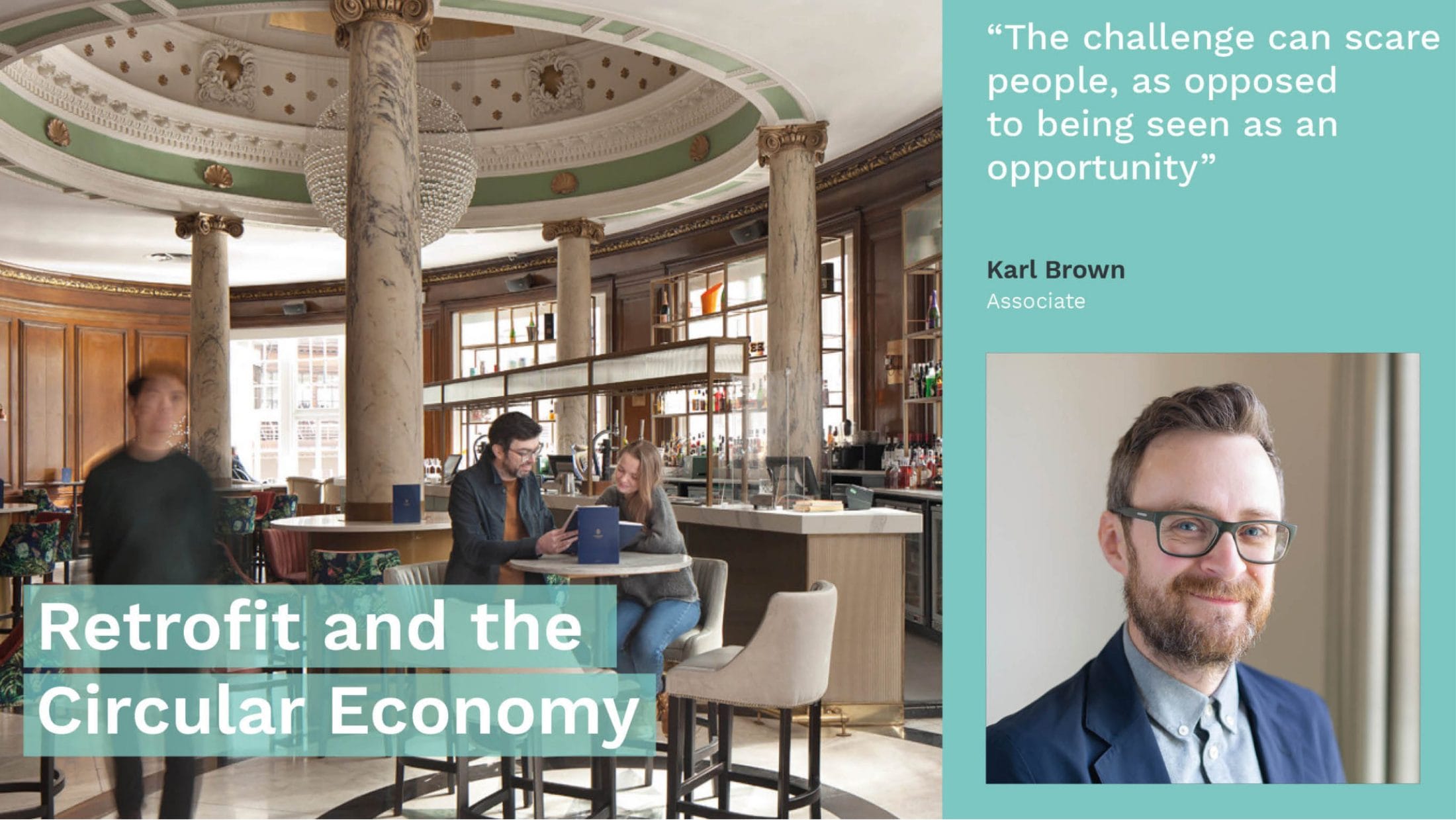
This week’s Thought Leadership piece comes from Karl Brown, Associate, who looks at the importance of retrofit in architecture and how we need to implement a circular lifecycle for existing buildings.
“When existing buildings cannot be utilised, we need to design robust, adaptable buildings, use natural materials where we can and promote disassembly. But we urgently need to prioritise upskilling for retrofit throughout the industry”
Throughout the industry, there is currently a large focus on Modern Methods of Construction (MMC) and Design for Manufacture and Assembly (DfMA). While these principles are key in delivering new builds that meet essential sustainability targets, we also need to recognise the potential that the existing built environment holds.
The effects of the pandemic on the high street have been well publicised; in Sheffield, circa 70% of Fargate’s commercial space, once the main shopping street, is now empty. Reimagining the purpose of town centres is one part of the bigger challenge – increasing footfall by creating rejuvenated, inspiring places that people want to visit – but how can we ensure we harness the heritage when the building is not fit for purpose? We are surrounded by some stunning architecture, which we should embrace where possible – but where we can’t retain or repurpose buildings entirely, we should be reclaiming their components and giving a new lease of life to materials which, in many instances, are high quality and can cost more to dispose of than to reuse.
In order to fully adopt a circular economy, we need to change the historical, linear lifecycle from take-make-use-dispose to a circular take-make-use-disassemble-reuse. This does not only require an upskill across the industry, but a whole re-imaging on the industry itself. We need to look at our cities and existing buildings as materials banks, and encourage more careful disassembly rather than demolition, thus allowing the repurposing of buildings in a new way.
Retrofit provides complex challenges, there is no doubt about that. Many clients – and, indeed, architects – are more interested in new buildings; a blank canvas on which to express their design ability. I think many designers see retrofit projects as restricting their creativity, rather than seeing the constraints of an existing building as a new direction for creativity. When buying a house, for example, buyers often have to look beyond the colours, design and intricacies of what is already there and try to reimagine how they can put their stamp on it. Yes, there is always the buyer who would prefer to buy new and influence the design from the outset – but for many, the purchase of a house that someone else has lived in is a standard concept. We get excited by the potential opportunities when buying houses – why can’t this translate more widely to larger-scale projects? Clients need help to understand what they’ve already got. How many new buildings are created without fully understanding the types of spaces needed, and the possibilities of existing assets to provide these?
One of the barriers to this approach within Architecture is the skills gap. Currently, many University courses into Architecture don’t include sufficient modules that focus on sustainability or retrofit, requiring people to voluntarily upskill. But few people want to deal with leaks, asbestos, and heritage issues – it’s complex and difficult, and can be expensive (for everyone!). At HLM we are upskilling our people, myself included, through the AECB’s CarbonLite Retrofit Course to supplement our team of PassivHaus designers. Ultimately, we want to see the same standards applied to refurbishment as new build and accredited to AECB and EnerPHit standards. It can often be easier and cheaper to design new, and I think the challenge can scare people, as opposed to being seen as an opportunity.
There will always be a need to build new; retrofitting is the ideal in terms of minimising the embodied carbon outputs of projects, but it isn’t always possible. When existing buildings cannot be utilised, we need to design robust, adaptable buildings, use natural materials where we can and promote disassembly. But we urgently need to prioritise upskilling for retrofit throughout the industry, and if we can reach the stage of testing and certification for secondary materials, we will be better placed than ever to fully embrace the opportunities that repurposing buildings can provide.



